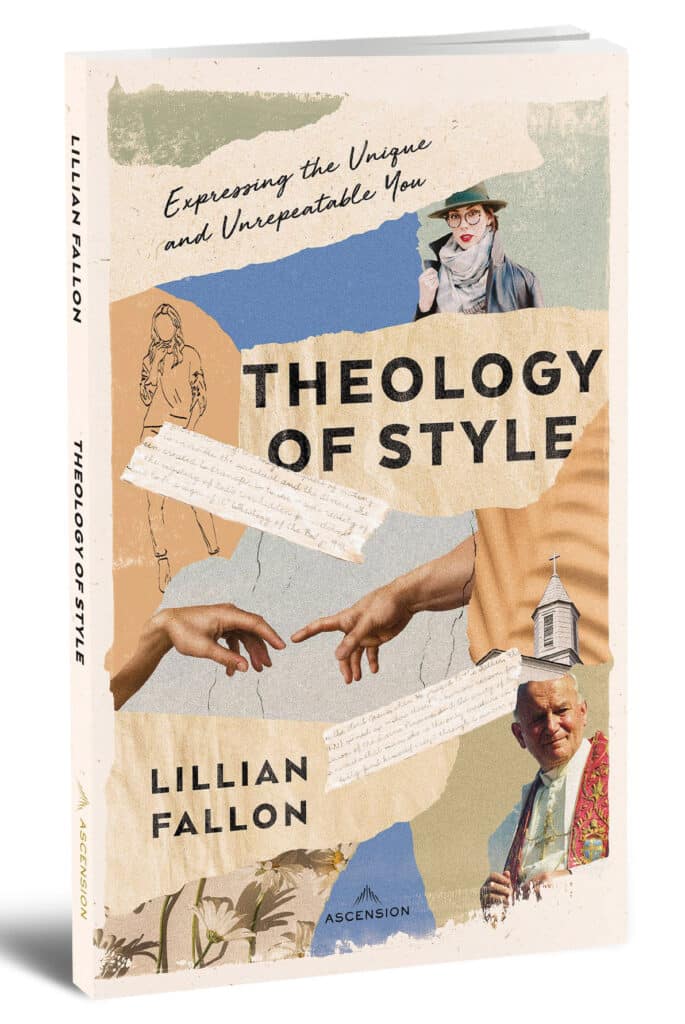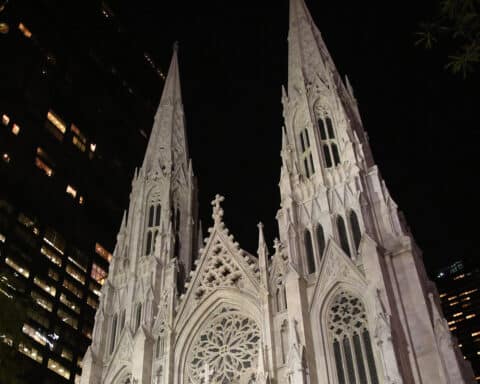Proper dress that shows respect for the institution and its members recently won out in the U.S. Senate, an outcome author Lillian Fallon would likely appreciate.
Pennsylvania’s junior senator, John Fetterman and his supporters had proposed changing an unwritten requirement that men and women members wear business attire on the floor of the chamber. The move failed. By unanimous consent, senators passed a resolution to formalize business attire as the dress code inside the chamber.
“Clothing ourselves requires an understanding of appropriateness for our environment,” she writes in her new book, “Theology of Style.”

But Fallon’s “Theology of Style” is about more than picking the right outfit for the right setting. She melds her fashion and style knowledge with her deep study of St. John Paul II’s theology of the body. “But what if I told you that this innate pull toward certain items of clothing is actually a sign of being made in the image and likeness of God? I know, this sounds like a bit of a leap, but trust me, it checks out,” she writes.
In his theology of the body, St. John Paul lays out his integrated vision of the human person. Made in the image and likeness of God, he writes, the human body has a specific meaning, “making visible an invisible reality.”
For Fallon, “a ‘theology of style’ shows how we live out being made in the Image every day — even in simple things, such as how we dress.”
She also draws on the pope’s 1999 “Letter to Artists.” “The artist has a special relationship to beauty,” the pope writes. “In a very true sense it can be said that beauty is the vocation bestowed on him by the Creator in the gift of ‘artistic talent.'”
Style is a “creative act,” Fallon writes, that “combines the beauty of a material item with the beauty of the human person. In this creative act, the beauty of a garment unites with the beauty of a person’s identity and emphasizes her unique personhood.”
Wanting to be the ‘fashion girl’
In Part 1, “Fashion Girl in a Catholic World,” she recounts being a fashion-obsessed teen growing up in Pennsylvania, aching to be part of the fashion world in New York City. But a tension existed between that world and her Catholic upbringing in a house filled with books on saints and reminders that “Catholics should be in the world but not of the world.”
She wasn’t sure she could be both Catholic and a “fashion girl.”
Attending Ave Maria University in Florida, Fallon was introduced to St. John Paul’s theology of the body and was absorbed by it. Then fashion drew her back in: She landed an internship at a fashion magazine in Manhattan. She became editorial assistant, then associate style editor and finally style editor.
Four years later she lost that job and returned home to Pennsylvania, returning to New York for a couple of short stints — once to help with a Fashion Week show. But that world had lost its allure. Fallon saw more of the industry’s cut-throat nature (think “The Devil Wears Prada”) and had learned more about what goes on behind the glam: garment industry sweatshops and ill-treated workers.
Back home, praying for direction, a thought popped into her head: “You’re a writer. So write!”
Theology of the body and style
Fallon covers a lot of ground in her book. Part 2 is devoted to “Theology of Style,” drawing more connections between the theology of the body and style. She also discusses masculinity and femininity and the important distinctions between the two.
Part 3, “Personal Style and You,” includes what she titles, “The Dreaded Modesty Section,” discussing how modesty has been approached in Scripture, and by the church and society. “Immodesty is just an indicator of a greater issue — a manifestation of a fractured sense of self-worth,” she writes.
Fallon prefers the word “reverence,” over “modesty,” because it “implies a positive truth about the female body, rather than negativity.”
She concludes with “The Real Purpose of Personal Style,” offering “pillars” for developing one’s personal style, which for her “is a tool for growing in understanding of your identity. It doesn’t define who you are. You come first; clothes come later.”
Fallon has been writing and speaking on “the intersection of faith and style” since 2015. It’s a unique niche. A reader won’t have to be a clothes horse or a theology-of-the-body devotee to find a few takeaways from this book, subtitled, “Expressing the Unique and Unrepeatable You.”
“Theology of Style: Expressing the Unique and Unrepeatable You“
Lillian Fallon, Ascension Press (2023)
126 pages, $15.95





